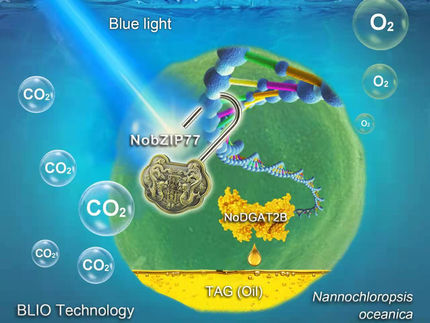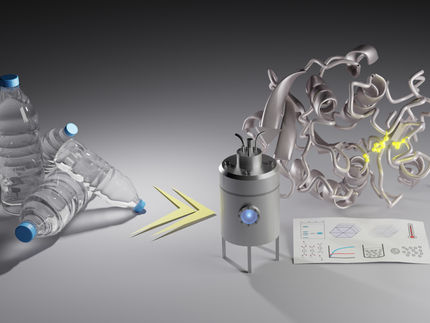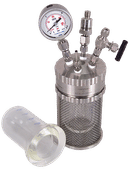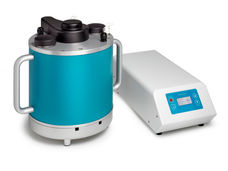New enzyme reactor technology
Advertisement
Researchers from the University of Bath in the UK have developed a new enzymatic process intensification technology that it one of only a few technologies available for accelerating the rate of an enzyme reaction.
Drs Emma Emanuelsson and Darrell Patterson developed the ‘Spinning Cloth Disc Reactor’ (SCDR) in the University of Bath’s Department of Chemical Engineering.
The SCDR is simple: based on but extending the principles of the conventional Spinning Disc Reactor (SDR), the SCDR also uses centrifugal forces to allow the spread of a thin film across a spinning horizontal disc; however this disc has a cloth with immobilized enzyme resting on top of it.
The SCDR therefore produces a flow of thin film both on top of, as well as through the enzyme-immobilised cloth, providing a large interfacial surface area for the reaction.
Dr Patterson said: “Our work has shown that this system produces enhanced reaction rates compared to conventional enzyme reaction systems. Our initial work has been on the conversion of a simple oil system (tributyrin hydrolysis), which shows us if the reactor could be used practically for the treatment of oily wastewaters for example. We found that the conversion and reaction rates in the SCDR were significantly higher than that in a conventional batch stirred tank reactor under comparable conditions. The SCDR was also simple to control – disc/cloth spinning speed and reactor feed flow rate gave good control of reaction rate and conversion.”
Dr Emanuelsson added: “Many enzyme reactors suffer from a loss of enzyme activity over many cycles of reaction due to deactivation – and one would perhaps expect this to be the case in a rotating reactor, where enzymes would be deactivated by shear.
“However, the most exciting result is that the immobilized lipase showed excellent stability to repeat reactions in the SCDR: for the tributyrin system, 80 per cent of the original lipase activity was retained after 15 consecutive runs.”
The team has also demonstrated the robustness of the SCDR to industry relevant feeds through the successful hydrolysis of different vegetable oils at reaction rates five times higher than other reactors.
Furthermore, a residence time distribution and flow analysis study showed that the SCDR is not quite like other rotating reactors - such as conventional spinning disc reactors and rotating packed bed reactors.
Dr Patterson said: “Our results have shown that the SCDR is a separate class of spinning disc-type reactor for process intensification. We have called this new reactor class ‘spinning mesh disc reactors’ (SMDRs), which enables any type of mesh (i.e. not just cloths) with an unbound top surface on a spinning disc to be included within this new reactor classification.
“Overall, our results indicate that the SCDR is an innovative, superior and robust technology for enhancing enzyme reactions, taking enzyme reactors beyond the current state-of-the-art. This concept can readily be extended to other enzyme-catalyzed reactions, where enhanced mass transfer and enzyme stability is needed.”
“We are currently looking at biodiesel synthesis and pharmaceutical reactions to extend the applications, but we are more than happy to test this new reactor on other reactions if there is interest from others.”

































































